

Back and forth, hither and yon – whether on my habitual trajectory between Touraine and Paris or further afield… destinations, encounters, events and observations I can’t resist sharing.

My last Manhattan neighborhood back in 1986 was the East Village, when it was still marginal to rough. An attempt by young art dealers to break out from Soho and establish an edgy gallery district had failed, and the mood was dispirited. The block I lived on off Third Avenue on East 12th Street, was lined with a modest mix of prewar appartment blocks and small-scale brownstones, awaiting the spark of gentrification.
I’d moved downtown from a coop building off Central Park on the establishment Upper East Side and the culture shock was was both thrilling and intimidating. Mugging was rampant then throughout the city, especially in borderline neighborhoods, so dormant feral instinct quickly kicked in. A few years earlier, fresh out of college, I had a dim apppartment on West 79th Street off Broadway, followed by a sunny, souless perch in an anonymous Yorkville high rise, but had yet to share a stoop with hookers and addicts.
Times sure have changed. This month, our eldest daughter will move into a college dorm two blocks from my old address, in what has become the most desirable neighborhood in Manhattan, if not the country, for a young creative person. It’s safe but still aesthetically edgey compared to predominantly residential/retail uptown neighborhoods. Happily there are still vestiges of its immigrant and bohemian heritage. Read More »
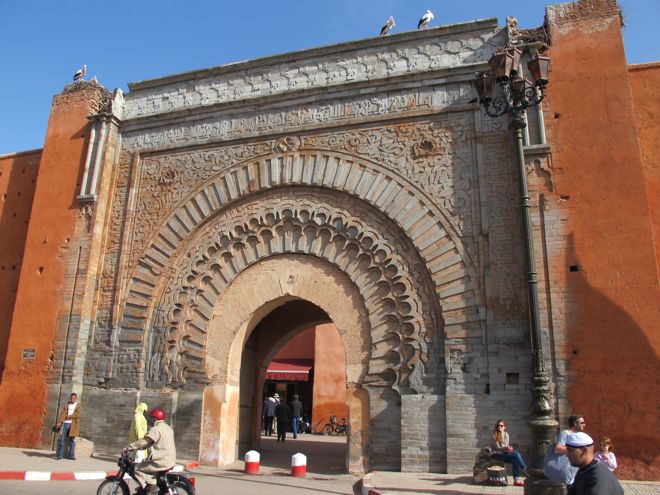
It didn’t take long for my eerie premonition of Magreban Revolution to play out in Tunisia and now Egypt. Morocco could well be next. I was riveted by the surge of protests which erupted in Tunisia the week of our return. They gained astonishing momentum, prompting the clandestine flight of Ben Ali, the autocratic, unelected president, in what Tunisians are calling their ”Jasmine Revolution”. Ben Ali, who ousted Tunisia’s popular post-colonial president in 1987, had been preparing a gilded retirement in France, where he owns sumptuous properties in Paris, the Cote d’Azur and Courchevel. He was refused the right to land here and members of his immediate family, already in France, were told to leave. So much for that pipe dream.
The mood in France is supportive of the Tunisian people’s emancipation. The Sarkozy government took heat for protracted silence throughout the protests, then proposing support to help quell violence. Most took that as a sign of support for Ben Ali rather than a strategy to avert violence used against protesters. The police fired on crowds and there were scores of deaths. Hard for the French administration to stage a graceful about-face after positioning Ali as a close friend, putting up with his despotic, corrupt rule, because he squashed Islamic opposition parties and claimed the healthiest economic growth record in Africa. Ali was hardly a comic book villain like Saddam Hussein, but has plenty in common with Permanent President Mubarak in Egypt where freedom of speech and true political opposition are also forbidden – as we can no longer ignore.
Morocco’s Royal Highness, despite his seeming popularity, has reason to be nervous. The domino effect could take off as it did in formerly communist Eastern Europe. The fact that Mohammed VI’s portrait is ubiquitous in commercial establishments throughout Morocco can be interpreted as a gesture of fear rather than fealty.
Geopolitics aside, I did promise to share visit recommendations to the Rose city. The reaction of French friends to our Marrakech holiday was a chorus of, “It’s nothing like it was… isn’t the real Morocco… Morocco à la Française.” But hey, french tourists flock to New York and Miami – which are hardly representative of America’s heartland. Key to Marrakech’s appeal is the alluring cocktail of cosmopolitan sophistication, exoticism and a whiff of decadence – out of your cultural comfort zone without being overly disorienting or dangerous.
If you read French (and even if you can’t), pick up a free copy of the monthly official Marrakech Pocket Guide, distributed in hotels and restaurants. It has a calendar of events, most of the addresses you’ll need grouped by category, plus ads for many good restaurants, cafes and shops.
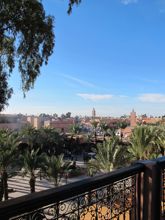 |
 |
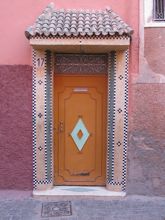 |
 |
 |
 |
 |
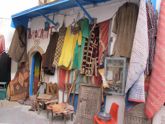 |
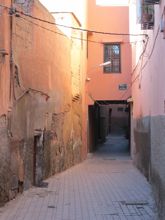 |
 |
 |
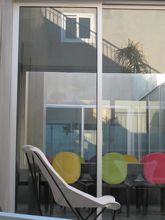 |
 |
 |
 |
 |
 |
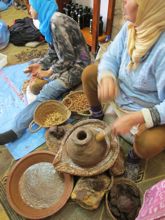 |
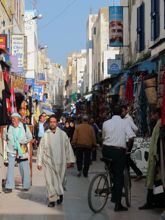 |
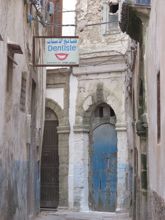 |

As with her diet, a French woman’s beauty and grooming regimen tends to be well balanced. She won’t deny herself much, yet consumes in moderation. A realist who plays up her best features rather than obsess over flaws; she accepts that beauty, like an impeccable jardin à la Française, demands consistent maintenance.
Keeping up appearances is a vital tenet of French culture, particularly out in public, which is why my daughters give me the once over before I leave the house, lest I regress to American standards and slip out to the bakery in running sweats. On average, French women over thirty don’t favor conspicuous makeup. Color statements are acceptable for hair dye and pedicures. Glowing skin and alluring eyes are the priority (over 60% of French cosmetic purchases are for foundation and mascara). It’s rare to see women put lipstick on in public, in part because they don’t wear it consistently.
However, teens and young women in their twenties are breaking out of the natural look, experimenting and having fun with bronzing powder, false eyelashes, heavy eyeliner and coats of mascara, plus playful hues of nail enamel. A Re-boot of Bardot in the 6os. Read More »
© Copyright 2025 Casey O’Brien Blondes - Privacy Policy | Design by Weller Smith Design
Do NOT follow this link or you will be banned from the site!